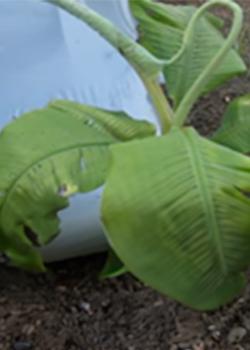Banana
Banana (Musa sp.) is a significant fruit crop known for its year-round availability, affordability, taste, and nutritional and medicinal value, making it a favorite among people of all backgrounds
It also has strong export potential. A tropical crop, bananas thrive in temperatures ranging from 15 ºC to 35 ºC with relative humidity between 75% and 85% .
They grow best in tropical, humid lowlands and require a high amount of nutrients. Bananas are among the most important food crops globally.


The Role of Elements
Potassium (K)
- Increases the number and weight of hands per bunch, boosting yield.
- Produces strong successors with high yields.
- Enhances frost resistance, particularly during winter months.
- Promotes early banana bunch emergence and early yield maturity.
- Improves efficiency of irrigation and fertilization.
- Enhances plant resistance to diseases and adverse environmental stresses, especially increased soil and irrigation water salinity.
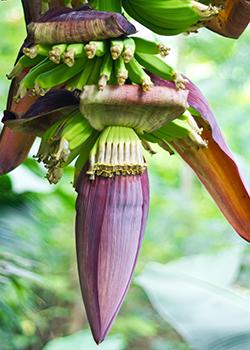
Phosphorus (P)
- Improves growth and root distribution.
- Increases vegetative growth rate and number of leaves.
- Increase flowering, number of hands and fingers per bunch.
- Increase quality characteristics of the crop.
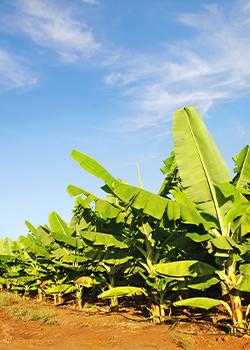
Calcium (Ca)
- Enhances plant resistance to environmental stress factors, especially frost that occurs in winter.
- Promotes root growth, distribution, and vegetative growth.
- Increases resistance of root hairs to soil diseases like nematodes and root rot.
- Increases yield, bunch weight, number of hands, and finger weight.
- Improves fruit storage ability.
- Increases fruit resistance to fungal diseases.
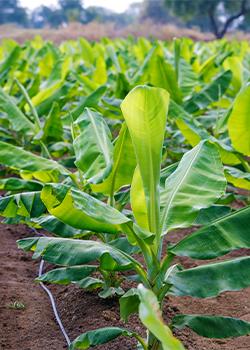
Deficiency Symptoms
Potassium (K)
- Poor vegetative growth.
- Reduced number of hands and weight per bunch.
- Low number of fingers and poor quality on hands.
- Weak successors with low production.
- Increased susceptibility to viral, fungal, and insect diseases.
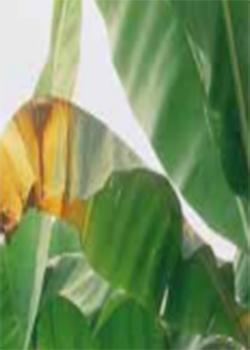
Phosphorus (P)
- Reduces the number of leaves and small plant size.
- Limited root distribution.
- Lower crop quality specifications.
- Decreases the number of fingers and hands per bunch, leading to low yield.

Calcium (Ca)
- General weakness of plants with decreased crop quantity and quality of fruits.
- Reduced resistance to unfavorable environmental conditions.
- Inhibition of meristem cell growth and shoot tip development.
- Leaf tips curl into a hook shape.
- Appearance of diseases such as nematodes and root rot on roots.
